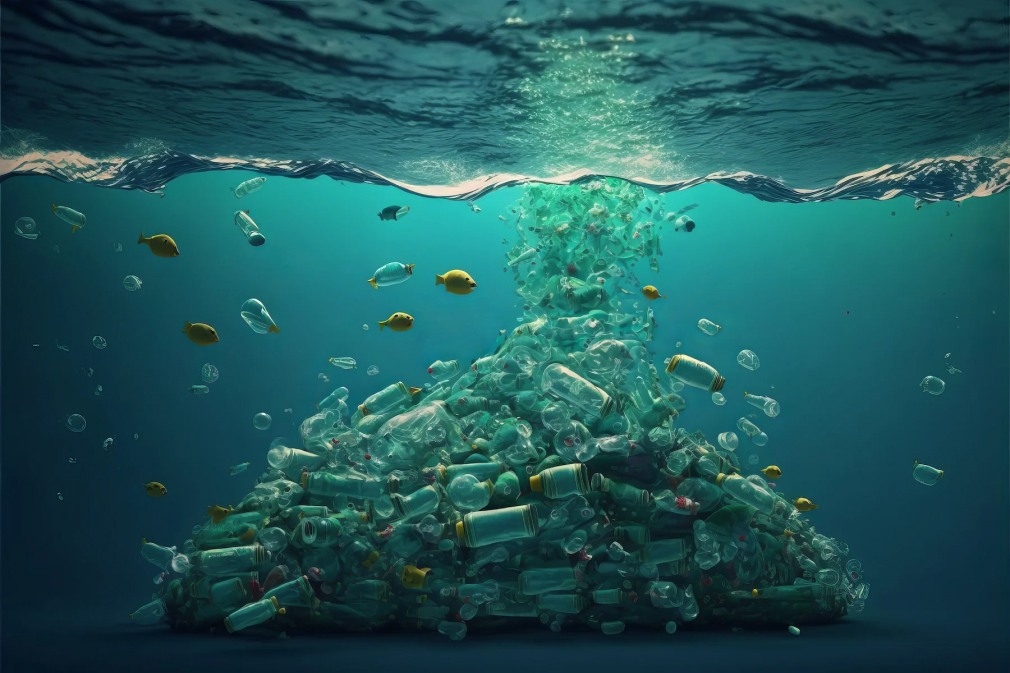The Impact of Water Mass Dispersal on Marine Microplastics Transport Trajectories

On February 21, 2024
Science X's guidelines and rules of editorial quality are vigilant when ensuring the credibility of content. Our Editors identify crucial characteristics:
- Fact-checking has been done
- Paper has undergone peer-review
- Sourced from a trustworthy authority
- Proofreading has been completed
This article is by Hannah Bird, Phys.org.
Marine microplastics, varying in diameter between 1 μm and 5 mm, are a growing environmental concern. These microplastics have an environmental lifetime of over 100 years and can severely impact oceanic life. They are carried over vast distances by ocean currents, making their effects ubiquitous, even reaching polar basins.
Marine microplastics often end up accumulating on shorelines and mixing with the sand. However, there are specific regions where the concentration of microplastic pollution is particularly high. For instance, the five subtropical ocean gyres, which consist of rotating currents in the North and South Atlantic Ocean, North and South Pacific Ocean, and Indian Ocean, are known for their 'garbage patches' made up of millions of square kilometers of floating surface microplastics.
Prior studies have proposed that the global floating marine debris crisis grows by 15.6 trillion particles annually.
A recent study published in Frontiers in Marine Science has examined the microplastics found on the beaches of the Canary Islands, which are popular Spanish tourist destinations. Researchers investigated the sources and possible transport pathways of the microplastics before they are ultimately deposited on these beaches.
The location of the Canary Islands is significant as they are within the North Atlantic subtropical gyre and the direct path of the wind-driven Canary Current. The study focused on Playa Grande (Tenerife), Playa de Famara (Lanzarote), Playa Lambra (La Graciosa), and Arenas Blancas (El Hierro), particularly noting transport mechanisms over large-scale (>100 km) and meso-scale (10–100 km) distances. These beaches experience critical marine debris problems.
Dr. Daura Vega-Moreno from the Universidad de Las Palmas de Gran Canaria, Spain, along with her colleagues, particularly examined the effects of current velocities in the latitude range of 27°—32°N over a multi-year period and the consequential impact on marine debris transport.
The open-ocean focus is necessary because the factors affecting microplastic transport are different in open waters compared to coastlines. Coastal regions usually sort microplastics by density, size, and shape, with wind and waves carrying lighter and smaller materials farthest inland. In open waters, additional variables such as the plastic's internal composition, degradation state, water column temperature, convection, and the Coriolis effect play important roles.
The research team utilized data from several projects dating back to 2017, where microplastic particles were released into the sea. The team tracked the particles using marine technologies and direct water column samples from research cruises.
A microscope was used to identify each type of marine debris, collecting a total of 260 microplastic fragments and fibers. The collected data were used in modeling software to map trajectories from source to beach sink and create distribution maps.
Dr. Vega-Moreno and her colleagues identified the water depth of 200 m and 1,100 m to be key accumulation points for plastic fragments and fibers. Factors contributing to this include natural sinking through the water column and the flow of Mediterranean Water, which has high salinity outflow from the Strait of Gibraltar.
This water mass descends below the North Atlantic Central Water to the Atlantic Basin's seafloor, reaching depths of 1,000–1,200 m and disperses towards the Canary Islands. The Mediterranean Sea, where the water originates, is known for a high concentration of large plastic pieces and microplastics. According to estimates, nearly 10% of worldwide marine plastic pollution is found in the Mediterranean Basin alone.
Smaller microplastics that are either less than 1 mm in size or degraded are likely to be carried in the descending water mass, being transported across vast distances within the oceanic basin deep beneath the surface.
Assessing the transport pathways of marine microplastics and therefore where they may wash ashore is important for targeted removal techniques, as well as mitigating the consequences on marine and coastal biota. This research highlights the role deeper water masses have to play in dispersing plastic pollution, thus further work on the locations of intermediate (~1,000 m) to deep water (>2,000 m) formation is vital, especially as this includes polar regions.
Journal information: Frontiers in Marine Science
© 2024 Science X Network




